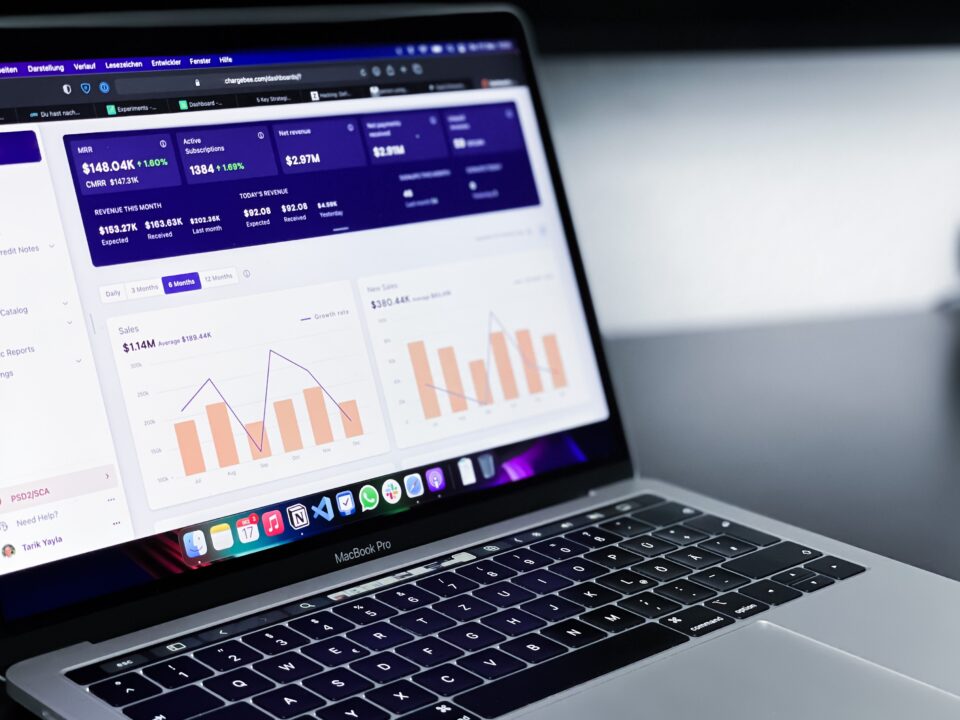Sales forecasting helps companies predict their future sales to determine their expected cash flow for the coming quarter. It should be part of every smart business plan.
Sales forecasting takes into account historical sales data, your current sales pipeline, and your sales cycle length.
Businesses use a variety of tools and methods for forecasting sales. Sales forecast templates are handy, because you can customize them for your individual business needs. Best of all, they are often free!
Free sales forecasting templates provide an excellent starting point for accurate sales forecasting. But they’re not the only tool for the job.
Importance of Sales Forecasting
Accurate sales forecasting can help everyone, from small business owners to Fortune 500 companies thrive. A reliable sales forecast gives your sales team goals to shoot for. It can help motivate every sales rep on your team to increase their conversion rate to match predicted sales.
Sales forecasting can also motivate your sales team to bring in new business to increase monthly sales.
Sales forecasts help generate predictions about total sales and total revenue for a designated time period. It can help your company:
- Manage inventory
- Set sales goals
- Establish prices
- Make hiring decisions
- Make smarter decisions about marketing and advertising
- Shift sales strategies as necessary
- Create more accurate budgets
Your sales forecast can also help you set unit prices, as the total cost of goods may depend on the quantity of materials purchased.
Sales forecasting gives C-level executives, sales managers, and finance and accounting departments solid data on which to base business decisions. It also contributes to the accuracy of other financial projections, including projected cash flow analysis and burn rate across a specific time frame.
Pros and Cons of Sales Forecasting Using Spreadsheets
Some companies use a Microsoft Excel template or Google Sheets to forecast sales. While these tools provide a good starting point, they are not without some hidden dangers.
Let’s look at a few of the pros and cons of gathering accurate sales projection data using spreadsheets like Excel or Google Sheets.
Pros:
- Helps the sales team and sales manager develop a viable sales plan based on historical data
- Helps determine realistic goals for a new product launch
- Shows the sales team how close they are to reaching their goals and what adjustments they might need to make
- Provides insight into the company’s growth rate
- Can help predict gross profit in a best-case scenario
- Assists with inventory management
- Simple to use
- Easy for anyone to view
Cons:
- Presents vastly simplified data
- Relies on sales team predictions and the current sales pipeline
- Relies on human analysis of data for accurate sales predictions
- Cannot limit permissions so members of your sales team can see only specific fields
- Does not integrate with your CRM for access to real-time data resulting in stale forecasts
- The manual process of sales forecasting can lead to typos, transposed digits, or spacing errors, which can cause inaccurate sales predictions
In fact, typos have led organizations from large universities to Fortune 500 companies into costly spreadsheet errors resulting in the loss of millions of dollars or more. For instance, the infamous “London Whale” incident cost JP Morgan $6.5 billion in losses and fines.
Free Spreadsheet Sales Forecasting Templates & Resources
If you’re looking for great sales forecast templates for Microsoft Excel, you can find many examples to download. We’ve searched out more than 25 handy free sales forecast templates for you.
If you choose to take this direction to create your sales forecasts, you can download and customize sales forecast templates to meet your company’s needs.
Sales Forecasting Methods
Businesses can use a variety of sales forecasting methods, depending on the size and age of the company, the size of the sales team, the typical pipeline, and even the quality of monthly sales data.
Let’s explore a few examples of sales forecasting methods.
- Intuitive forecasting – Rather than relying on historical sales data, this method relies on your sales team’s predictions, observations, and instincts. Perhaps one of the least reliable sales forecast methods, intuitive forecasting works well for new businesses with little data to analyze.
- Opportunity stage forecasting – If you have a good handle on your sales pipeline and conversion rate, opportunity stage forecasting may provide accurate sales predictions. However, this method fails to account for changes in your advertising or marketing messages or tactics. It only looks at the likelihood of a specific deal closing or not.
- Length of Sales Cycle Forecasting – This sales forecast method relies on historical data to predict the likelihood of future sales. It may provide more objective predictions than opportunity stage forecasting.
- Historical forecasting – As its name suggests, historical forecasting looks only at past sales data to predict future trends. What’s missing? Aspects like seasonality, changes in marketing or advertising, and even changes in your sales team, which are all cogs in the wheel of your sales success.
- Multivariable analysis forecasting – The more sophisticated of the sales forecasting methods explored here, multivariable analysis forecasting takes into account several factors to create more accurate sales predictions. This process looks at the average sales cycle length, the performance of individual sales managers and their reps, prior conversion rates, and the position of each deal in the sales cycle at a specific point in time.
Sales Forecasting Tools
Business leaders and sales managers can use a variety of tools for sales forecasting, including the observations and predictions of the sales teams, as well as accounting spreadsheets and CRM data.
Team communication plays a significant role in sales management tracking. Sales team members must strive to be honest and objective with their sales manager about:
- The length of the sales cycle
- Conversion rates
- Customer demand
- The likelihood of closing any specific deal
That’s why using historical data can lead to more accurate sales forecasts, which are more useful in business planning. With this in mind, some common sales forecasting tools can help create more accurate predictive analytics.
- Microsoft Excel – Excel provides a simplified format to store and present data. Easily accessible by anyone in your organization, it puts sales data into the hands of the team who needs it. However, because it requires manual data entry, it puts your sales forecasting at the mercy of typos, misinterpretation, and other human errors.
- Google Sheets – This cloud-based spreadsheet solution eliminates the struggle of viewing outdated versions of the file. But when you provide members of your sales team with access to the file, they can view and/or edit the entire sheet. You can’t limit permission to specific elements.
- Salesforce – Salesforce is a flexible and robust customer relationship management tool that can complement your sales forecasting platform. You can use sales cycle data and other information from Salesforce for more accurate sales predictions.
revVana Automates Sales Forecasting of Revenue
Unlike sales forecasting using spreadsheets, revVana integrates with your Salesforce CRM tools to provide actionable insights and manage your sales data in real time to generate revenue forecasts. revVana uses accurate data about units sold, total sales, and pricing to provide more accurate sales forecasting.
Schedule a free demo of revVana today to discover how more accurate sales revenue forecasting can lead to increased revenue for your organization.





